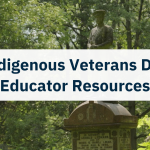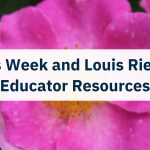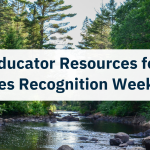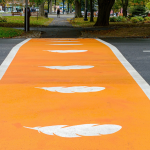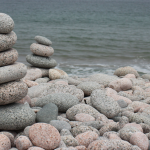Discussing Indigenous History and Contemporary Issues in the Classroom
Teaching Indigenous history and discussing contemporary issues in the classroom helps learners understand the rich cultures and traditions of Indigenous Peoples, as well as the challenges they have faced and continue to face. However, discussing these topics can be difficult because they often involve sensitive subjects like colonization, cultural loss, and ongoing struggles for rights and recognition.
As educators, we understand the importance of having these conversations with learners, but getting started can feel intimidating. In this post, you’ll find a guide to help you discuss the histories and present realities of Indigenous Peoples in a respectful, informative, and engaging way for learners.
Preparing Yourself
Before teaching Indigenous history and contemporary issues, it’s important to understand why they matter to learners. Many educators went through the school system when Indigenous Peoples, their history, and cultures were either absent from the curriculum or, if present, misrepresented. By discussing these topics from an informed position, we can help learners discover the truth about history, appreciate the contributions of Indigenous Peoples, and understand the challenges they face today.
It’s important for you, as the educator, to prepare yourself before teaching your learners about Indigenous Peoples. This means learning about Indigenous history, cultures, and current issues. It also means understanding your position and biases. If you’re not Indigenous, recognize that you are teaching about a culture that is not your own. It’s important to approach these topics with respect and humility.
Tips for preparing yourself
- Do your research. Read books, watch documentaries, and listen to Indigenous voices to learn about their history and current issues. Look for resources created by Indigenous people.
- Acknowledge your biases. Be aware of any preconceived ideas or biases you might have. Understanding your own perspective can help you teach in a more balanced and fair way. Find resources about decolonizing yourself as an educator, decolonizing and Indigenizing your classroom, and navigating common pitfalls when Indigenizing your classroom.
- Seek guidance. Connect with Indigenous educators or community members who can provide advice and support if possible. They can offer insights that you might not find in books or online. Your local Friendship Centre is a great resource if you’re unsure how to connect with Indigenous communities. This blog post also contains a lot of practical resources and strategies for inviting Indigenous guests into your classroom.
Creating Respectful Classrooms for Indigenous History
When discussing Indigenous topics, creating a classroom environment where all learners feel safe and respected is essential. Some learners might have Indigenous backgrounds, and these topics could be very personal for them. Others might not know much about Indigenous issues and may have misconceptions.
Tips for creating a safe environment
- Set clear ground rules for discussions. This article walks you through how to manage challenging classroom conversations. Emphasize the importance of listening to others, being respectful, and not making assumptions about people’s experiences or backgrounds.
- Encourage empathy. Help learners understand that these topics are not just about history but about real people and communities they affect. Encourage them to think about how they would feel in similar situations.
- Be open to questions. Let learners know that it’s okay to ask questions, even if they’re unsure or uncomfortable. This is how they learn. However, remind them to ask questions respectfully. You may also consider having a way to ask questions that allows learners to remain anonymous.
- Remain positive. It may seem like an odd suggestion, but these heavy topics can leave learners feeling hopeless. Instead of avoiding these difficult conversations, ensure you end with a discussion of the next steps and actions learners can take to create positive change in the present.
Connecting Indigenous History with Contemporary Issues
The last thing we want to do as educators is present the challenges faced by Indigenous Peoples as something that only exists in the past. Connecting Indigenous history with the present can help us avoid this. When teaching Indigenous history, balance the past with contemporary issues so learners understand ‘how we got here.’
Tips for teaching Indigenous history and contemporary contexts
- Begin by teaching about the rich cultures, traditions, and knowledge systems of Indigenous Peoples. This helps learners appreciate the depth and diversity of Indigenous cultures. While the history is important, help learners understand how historical events continue to affect Indigenous Peoples today. For example, you can discuss how the loss of land during colonization impacts Indigenous communities’ connection to the land now.
- Discuss colonization honestly. Explain how colonization affected Indigenous Peoples, including the loss of land, culture, and lives. Be honest about the harsh realities, but present the information in a way that is appropriate for your learners’ age and understanding.
- Highlight resistance and resilience. Teach about how Indigenous Peoples resisted colonization and continue to fight for their rights today. Show examples of Indigenous resilience and contributions to society.
- Use current events. Incorporate news stories or recent events related to Indigenous issues. This helps learners see that these topics are not just about the past but are also relevant today.
- Invite Indigenous voices. Whenever possible, include Indigenous voices in your lessons. This could be through guest speakers, interviews, or videos of Indigenous people discussing their experiences and perspectives. This is one of the most important actions you can take as an educator. By inviting Indigenous guests to tell their stories, you create and hold space for their truths.
Using Culturally Appropriate Resources
When teaching Indigenous history, using culturally appropriate and accurate resources ensures learners receive authentic perspectives. This helps ensure that learners receive correct information and that Indigenous cultures are represented respectfully.
Tips for using appropriate resources
- Choose Indigenous authors and creators. Look for books, articles, and videos created by Indigenous people. These resources are more likely to provide an authentic perspective.
- Avoid stereotypes. Be careful not to use resources that present Indigenous Peoples in a stereotypical or one-dimensional way. Show the diversity and complexity of Indigenous cultures. Pay close attention to any sources that are not authored by Indigenous Peoples themselves.
- Use a variety of materials. Incorporate different resources, such as stories, documentaries, art, and music. This makes the learning experience more engaging and helps learners appreciate the richness of Indigenous cultures.
Encouraging Critical Thinking When Teaching Indigenous History
Teaching Indigenous topics isn’t just about providing information; it’s also about helping learners think critically. Encourage them to question what they’ve learned in the past, consider different perspectives, and think about how they can contribute to a more just and equitable society.
Tips for encouraging critical thinking
- Ask open-ended questions. Encourage learners to think deeply by asking questions like, “How do you think this event affects people today?” or “What can we do today to support Indigenous rights?”
- Promote discussion. Give learners time to discuss these topics in small groups or as a class. This allows them to share their thoughts and learn from each other.
- Encourage action. Help learners think about how they can make a positive difference. This could include learning more about Indigenous issues, supporting Indigenous communities, or sharing what they’ve learned with others.
Conclusion
Teaching Indigenous history and contemporary issues in the classroom is an important part of education. It helps learners understand the truth about history, appreciate the diversity and resilience of Indigenous cultures, and think critically about the challenges Indigenous Peoples face today. By preparing yourself as an educator, creating a safe learning environment, using culturally appropriate resources, and encouraging critical thinking, you can help your learners explore these important topics respectfully and meaningfully.
Image attribution: The photo in this blog post features the Kwakiutl (Kwakwa̱ka̱ʼwakw) Bear Pole carved by Henry Hunt from the Kwakwa̱ka̱ʼwakw community of Fort Rupert, BC. This totem pole stands outside the parliament building in Victoria, BC.




